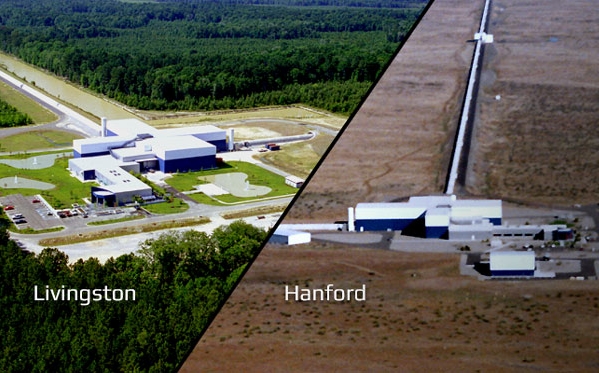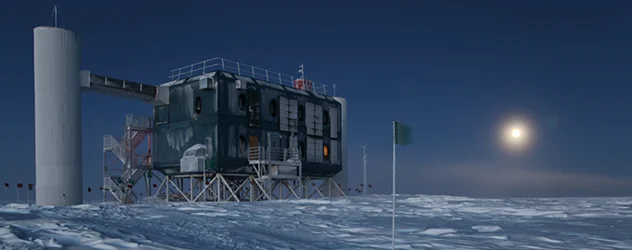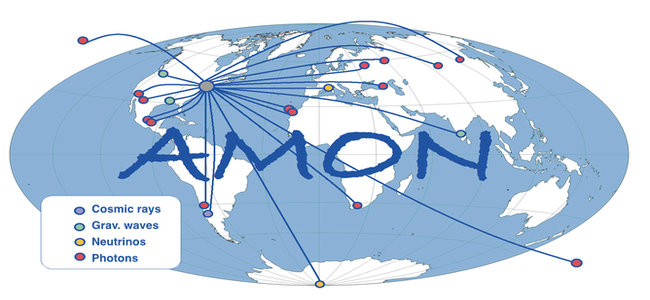Academic Research
2018-2020
Research Scientist
Frontiers of Science Fellow
Columbia University
Laser Interferometer Gravitational-Wave Observatory
2014-2018
Postdoctoral Scholar
Particle Astrophysics
Pennsylvania State University
The Astrophysical Multimessenger Observatory Network
2008-2014
PhD Student
Physics
Louisiana State University
Pierre Auger Observatory and the Extensive Air Showers produced by an Ultra-High Cosmic Ray
(Image credit)
2004-2008
Undergraduate Student
Physics
Sharif University of Technology
During my academic years in physics, I studied astrophysical sources producing high-energy elementary particles, electromagnetic waves, and gravitational waves!
The elementary particles I studied were mainly neutrinos which are rarely interacting and almost massless, and cosmic rays which are known to be charged particles such as protons and heavier nuclei. The electromagnetic waves span over a wide range of wavelengths from radio to gamma-rays. The gravitational waves come from the most exotic phenomena in the universe such as binary black hole mergers. All these “messengers” bring useful information from Space. We detect them with our telescopes on the ground and satellites in space. Then we perform extensive analyses of big data to understand the physics of the universe.
I searched for origins of high-energy neutrinos detected by the IceCube Neutrino Observatory by performing extensive follow-up observations using: NASA's Swift, NuStar, and Fermi satellites and by looking for sources emitting both gravitational waves and high-energy neutrinos. Gravitational waves were publicly announced by the LIGO/Virgo collaborations (LVC; See the public user guide).
LIGO consists of two detectors, one in Livingston, Louisiana and one in Hanford, Washington. Virgo is located near Pisa in Italy. LVC is focused on direct detection of gravitational waves and study of the fundamental physics of gravity. The first ever gravitational wave signal was detected in 2015 from the merger of two black holes. This event was the start of a new era in gravitational wave physics and astronomy.
The IceCube Neutrino Observatory is located at the South Pole and is designed to observe the cosmos from deep within the ice. At IceCube, I studied properties of high-energy neutrinos for realtime searches of their astrophysical sources.
An interesting way to study the multi-messenger and multi-wavelength astrophysical sources is to design and use multi-messenger cyber-infrastructures to do realtime searches between different data streams and perform rapid follow-up observations of significant coincidences. One current example of such central hubs is the Astrophysical Multimessenger Observatory Network (AMON). AMON is a project at the Pennsylvania State University which is a single virtual network that links several high-energy astrophysical observatories as well as gravitational wave facilities, enabling near real-time coincidence searches between data from different observatories aiming for multimessenger astrophysical transients and their electromagnetic counterparts and providing alerts to follow-up observatories.
At AMON, I studied coincidences between high-energy neutrinos from the IceCube neutrino observatories and gamma-rays from Fermi and HAWC observatories, using the AMON infrastructure. I also lead the X-ray and Optical/UV follow-up efforts of the realtime IceCube high-energy neutrinos using the NASA's Swift satellite.
I was also involved in a project called Scalable Cyber-infrastructure for Multi-Messenger Astrophysics (SCiMMA). This project was at the developing stages and the first phase was funded by the National Science Foundation. I led a machine learning working group to find novel solutions for astrophysical source discoveries through exploring and exploiting machine learning techniques (e.g. Regression, Classification, Decision Trees, and DNN).
My PhD thesis was a study on the Galactic magnetic deflections of ultra-high energy cosmic rays. I modeled the random component of the Galactic magnetic field, simulated cosmic rays, and propagated them through the field to measure their deflections. I also used the data of the Pierre Auger Observatory for this study. My dissertation is accessible from here.



